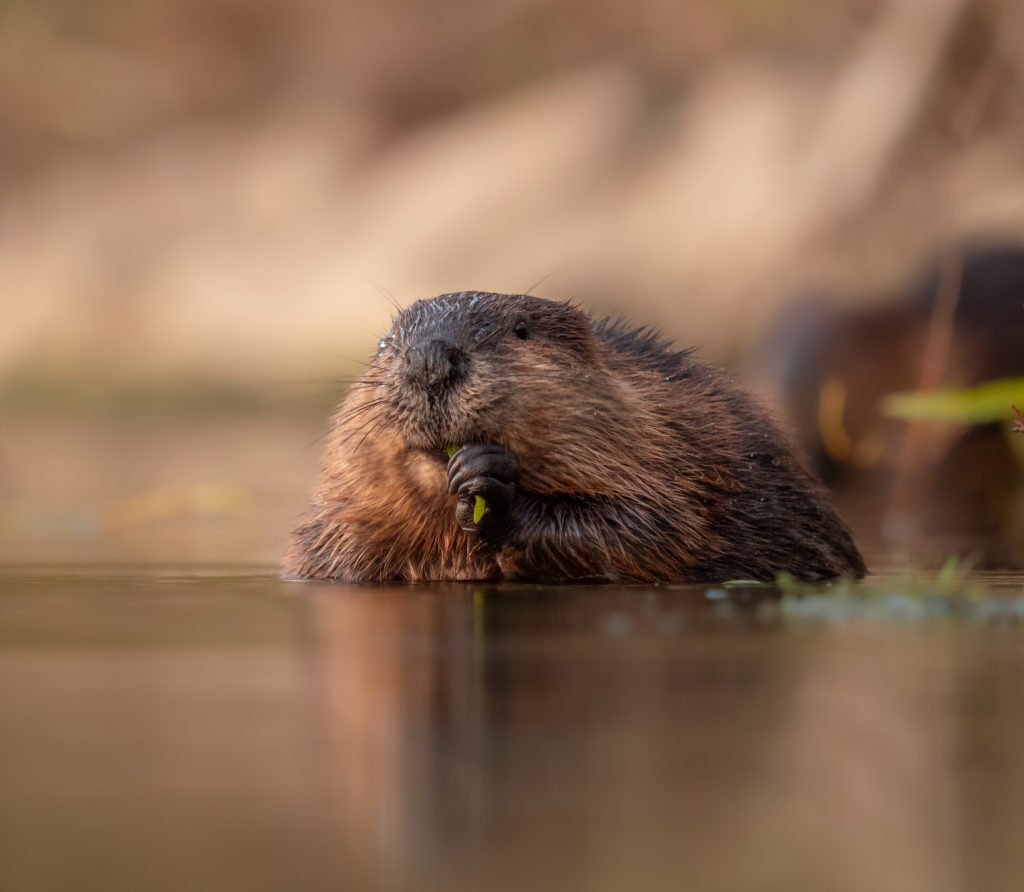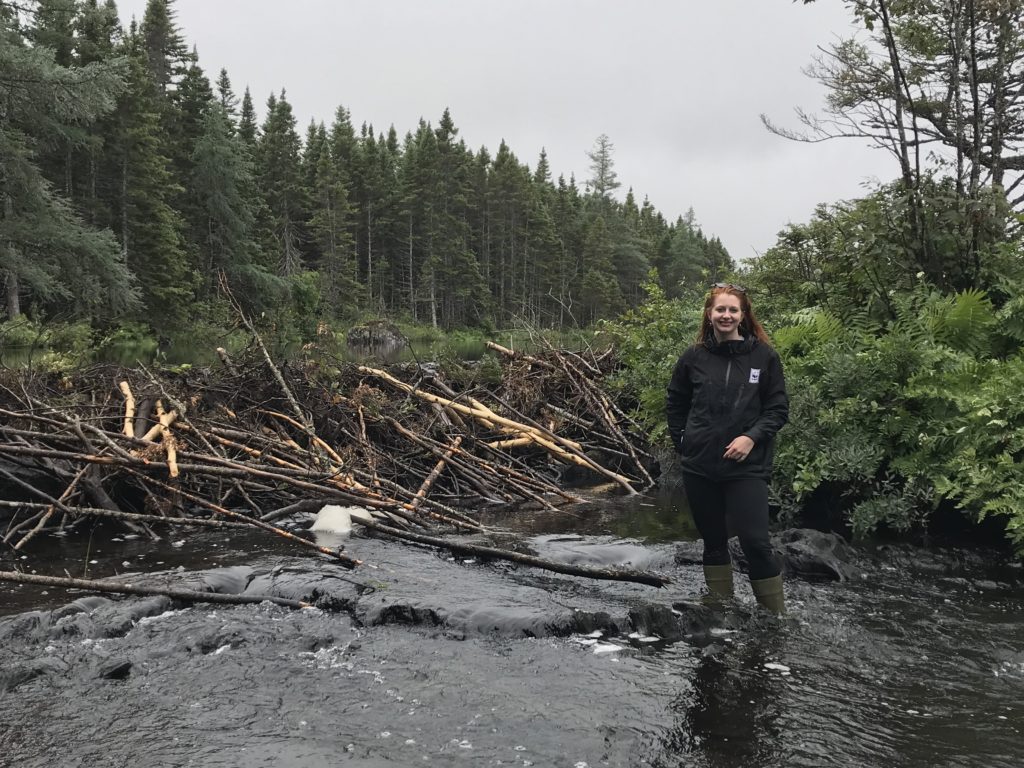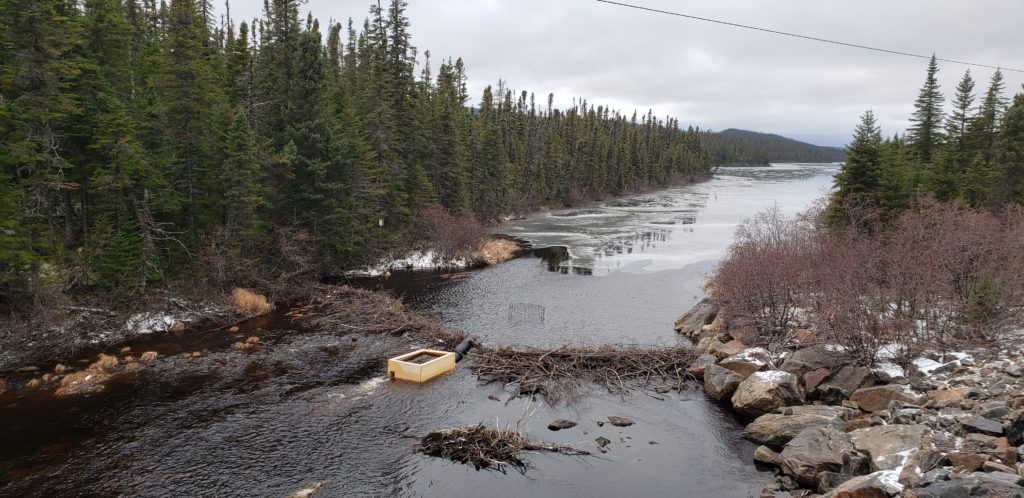When Beaver met Salmon: how fish-friendly flow devices keep their relationship moving forward

Have you ever taken a close look at a beaver dam? Logs and branches are woven into a lattice extending from streambank to bank. Able to withstand the pressure of all the water they hold back, these dams are remarkably sturdy. But while we all know beavers are skilled builders, their relationship with fish such as salmon is often misunderstood. This lack of understanding by humans can result in harm to both species.
This is why WWF-Canada is working with partners to insert fish-friendly flow devices into beaver dams in Newfoundland and Labrador. But to find out how these devices work we need to learn more about beaver dams!
Beavers: ecosystem engineers
Beavers work through the night to reinforce their dams because a watertight dam is necessary for the survival of their young, called kits. Beaver parents and their kits make use of the raised water level to forage safely and slip in and out of their lodge (undetected) through underwater passageways.

To the untrained eye, beaver activity — felling trees, digging channels and tunnels, building lodges and dams — can appear disruptive and downright messy, but through an ecological lens, they are creating complex (and crucial) habitats. This industrious process is why beaver have been awarded the title ecosystem engineer.
If you’ve ever visited a beaver pond, you might also notice that it’s surrounded by lush vegetation — a band of green that erupts behind the dam and around the pond’s edge habitat (known as the riparian zone). If you could see under water, you’d find an abundance of trout and young salmon. Beaver ponds are also a stopover spot for many species including rare and threatened songbirds. There are so many species that rely directly on beaver habitat for survival that they’re considered a keystone species, which means they are preforming a necessary role to uphold entire ecosystems.
Beavers have also co-evolved with local fish species across Canada (and globally throughout their range). Everywhere within their native range, beaver dams create complex environments used by fish. By increasing the large woody debris in streams and slowing the movement of water, beaver ponds are refuges for young fish such as salmon parr. The plant material and other debris captured in the pond also promotes insect abundance, so there’s plenty to eat in this stable, protective environment. This results in increased growth and survival, which consequently promotes population recovery for the fish.
Beavers can’t catch a break
Beavers provide tons of ecological benefits and ecosystem services for humans and wildlife, such as water purification, carbon sequestration (through the creation of wetlands and promotion of stream vegetation), and by buffering extreme weather events. Despite this, they’re are often considered to be a nuisance when their engineering activities overlap with human infrastructure.
It is a common practice for beaver dams to be removed. Sometimes this happens because a pond is causing a railway or farmland to be flooded. But sometimes beaver dams (and beavers themselves) are removed from ecosystems because they’re thought to be an impediment for salmon migrating in streams. While it is very rare to have complete blockage of fish passage for the span of the migratory period, salmon can be delayed for days or weeks due to inadequate water depth, which they need to propel themselves past the dam, or they may be reluctant to move through an area with reduced flow.
However, it’s the perception of this risk that leads to routine dam removals, and, unfortunately, general habitat degradation. When beaver dams are removed, the beaver pond/wetland is drained and young fish, which depend on the calm waters behind the dam, are flushed quickly downstream into fast-flowing water.
Fish-friendly flow devices to the rescue
WWF-Canada is working to implement a solution that will leave beaver-generated ecosystems intact, while addressing fish passage concerns. With funding from Fisheries and Oceans Canada’s Coastal Restoration Fund and the help of our partners — NunatuKavut Community Council Inc (NCC), Wood (an engineering consultant business), the Atlantic Salmon Federation, the Salmonid Preservation Association for the Waters of Western Newfoundland, the province of Newfoundland and Labrador, and the Beaver Institute — we have already installed four fish-friendly flow devices in Newfoundland and Labrador streams, most recently in NunatuKavut.
To passing drivers, it’s an odd-looking device in the middle of a beaver dam along the Trans-Labrador Highway. But it’s a welcome sight to NCC and WWF-Canada staff — we’ve been excited to trial a fish-friendly flow device on the salmon-bearing Shinney’s Brook, which has been identified by locals as an important fishing river and habitat.

Fish-friendly flow devices provide a route through the dam for salmon and other fish in case they can’t quite make the leap. This can be particularly helpful during hot and dry periods when the water is not deep enough for fish to use speed bursts to jump, or when the river has been modified by culverts, weirs or bridges that create unnatural “pinch points” in the riverscape. (Beaver dams aren’t a problem in natural conditions, by the way. It’s human infrastructure that can make it difficult for fish to pass.)
What does a fish-friendly flow device look like?
A fish-friendly flow device is a reinforced box with a wide pipe that runs through the dam. The slot in the box is designed to release water at a speed that attracts salmon and allows them to pass through unscathed. The pipe runs until the water is deep enough that beavers won’t plug it up on the upstream end (there’s also a cage that keeps the beavers at bay).
We install the device by making a small notch in the dam. After we’ve left the job site, the beavers quickly repair the hole, which secures the device in place. This tactic saves time and money because instead of working against nature by removing dams several times a year, we’re partnering directly with nature. So, while we go home and sleep, they maintain the project free of charge 24 hours a day, 365 days a year. It’s a true win-win situation!
As we continue installing these devices, we hope other will join us to help ensure beavers and fish continue to co-exist, like nature intended.

